You’re an awesome person; you care about your health enough to read articles like mine where you learn about amazing superfoods that will help you live longer, beat fatigue, and even lower your risk of heart disease and stroke.
You probably know a handful of your friends and family members on diets and weight loss plans who have similar healthy goals in mind.
It seems like everyone has been bitten by the health bug. And that’s a great thing!
But it doesn’t mean being healthy comes easy.
One of the hardest transitions I had to make on my healthy eating journey happened right at the starting line: the grocery store.
I used to spend so much time diligently reading nutrition labels on everything I picked up, hemming and hawing over products trying to analyze the healthiest buys. Then I’d choose one (or give up) only to get home and notice very unhealthy ingredients in my supposedly healthy food.
You see, food companies are making a fortune off of people like us who just want to find the most nutritious products for ourselves and our families. They’re not in the market of creating healthy consumers; they’re in the business of making money.
And healthy buzzwords mean dollar signs to these companies.
Wait, Doesn’t the FDA Protect Us?
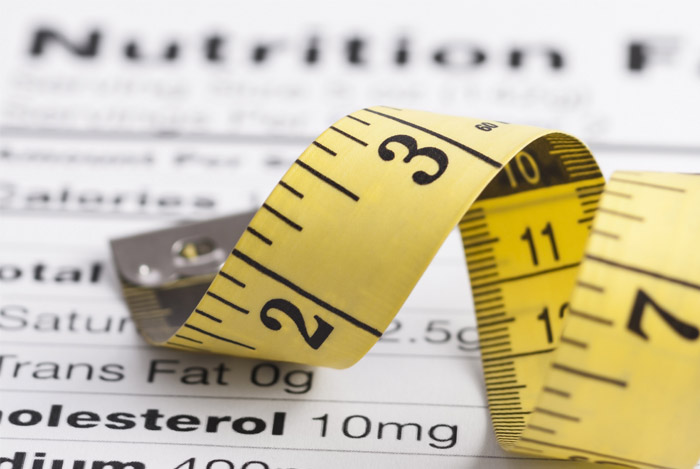 Truth: many nutrition labels are wrong.
Truth: many nutrition labels are wrong.
Labeling laws allow for estimated averages of fat, carbs, sugar, protein, etc., by up to a 20% margin of error. And these hidden additions add up big time over the course of a month or year.
Imagine choosing a frozen meal in a pinch because the label says it’s only 400 calories. If you factor in the 20% margin of error, that meal could actually be closer to 500 calories!
According to one study, when food testers analyzed 570 nutrients on 70 products, only 7% of them matched what the label said.
That means 93% of the products tested had inaccurate numbers for big basics such as calories, sugar, and carbs. Legally.
This is one reason why I don’t believe in calorie calculators; if your foods have so much room for hidden additions, you’ll never be able to accurately map your exact calories for the day, which could mean all the difference when you’re trying to create a specific calorie deficit.
So how is this allowed to go on?
The US Food and Drug Administration (FDA) doesn’t check the accuracy of nutrition labels; they just make sure the Nutrition Facts panel is present and legible.
It also doesn’t require food companies to subject their products to unbiased laboratories to test their nutritional content.
When an inaccurate label is brought to the attention of the FDA, the information is entered in a database, but the product is not recalled. If there’s a second violation within 60 days, the product may be suspended.
However, since food testing is so infrequent, it’s incredibly unlikely that second offenses are caught within the 60 day timeframe.
The long and short of it: food companies are not scared of the FDA.
That’s why it’s up to us to know about these common food labeling tricks to keep Big Food from sabotaging our healthy efforts.
Keeping these tricks in mind will not only help you breeze through nutrition labels like a pro, but make you a healthier, more informed consumer.
1. Check the Serving Size
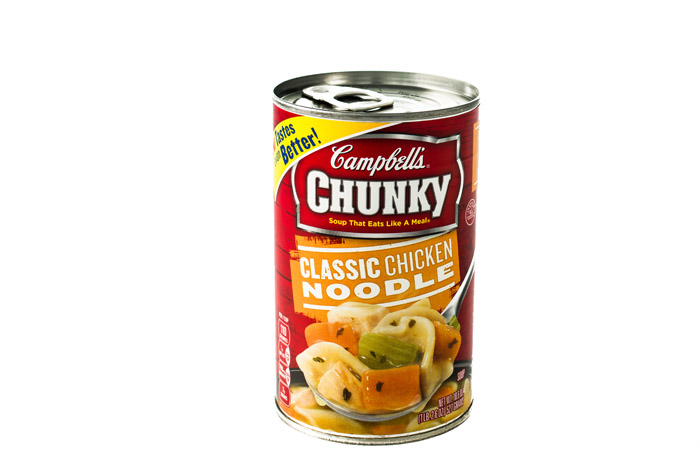 One way companies hide how unhealthy their products are is by shrinking the serving size.
One way companies hide how unhealthy their products are is by shrinking the serving size.
For example, a single serving of Campbell’s Chunky Classic Chicken Noodle soup is one cup, or surprisingly, just under half a small can.
According to a national survey of 1,000 consumers, only 10% of people said they would eat a one-cup portion, while 64% said they would eat an entire can at one time.
So why does Campbell’s shrink their portion size?
Because a full can of soup is 1,840 mg of sodium, about 80% of your RDA. Those with or at risk of hypertension or following low sodium diets should stay under 1,500 mg a day, which means that one can of soup would wipe out an entire day of sodium.
Tiny serving sizes make unhealthy foods seem less terrible, but it doesn’t mean they’ll fool you. Always check the number of servings in your food before you compare the nutrition facts.
2. Zero Trans Fat / Trans Fat Free
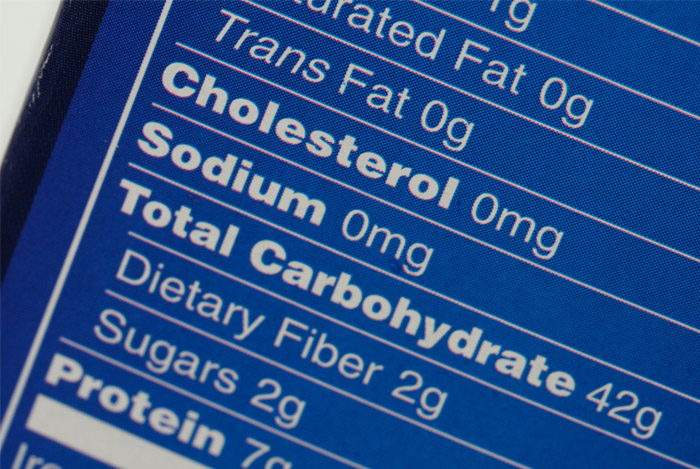 Trans fat is horrible for your heart; it lowers your HDL, or good cholesterol, and raises your LDL, or bad cholesterol. To say you should run far away from trans fat is an understatement.
Trans fat is horrible for your heart; it lowers your HDL, or good cholesterol, and raises your LDL, or bad cholesterol. To say you should run far away from trans fat is an understatement.
However, legally, foods can have a nice round 0 next to the trans fat category on their nutrition label if they contain less than 0.5 g of trans fat per serving.
Taking that 20% margin of error into account, your trans fat serving could be closer to 0.6 g. So if you eat one serving every day, you’re over 4 grams of trans fat for the week. Yikes!
To be totally sure you’re not getting any trans fats, look for trans-fat containing ingredients such as partially hydrogenated oils and shortening.
3. Natural or All Natural
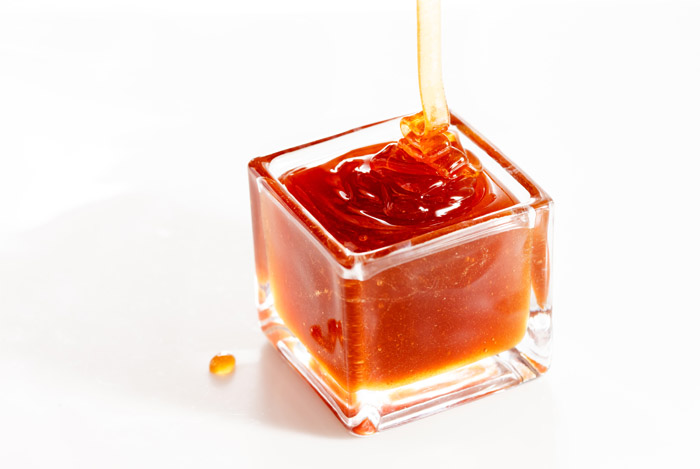 Most people will gravitate towards a food item labeled as ‘all natural’ because no one wants yoga mat chemicals in their food.
Most people will gravitate towards a food item labeled as ‘all natural’ because no one wants yoga mat chemicals in their food.
However, ‘all natural’ doesn’t mean your food comes from a sprawling farm in the countryside that packs their own products in a rustic barn.
It may surprise you to know that the FDA has no strict definition for products being labeled as ‘natural’ or ‘all natural’. Instead, it specifically leaves these terms up for interpretation by food manufacturers.
However, the U.S. Department of Agriculture (USDA) has guidelines when it comes to natural labeling on meat and poultry products.
Food items labeled ‘all natural’ cannot have:
- artificial flavors
- added colors
- synthetic substances
This is a good start, but not quite perfect. For example, salt and high fructose corn syrup are both technically derived from natural sources. So your product may be injected with preservatives, “antibiotics, growth hormones, and other similar chemicals”.
4. Free Range / Cage Free
 To debunk your dream about natural foods coming from happy farms even further, let’s talk about the issue with ‘free range’ and ‘cage free’ animal products.
To debunk your dream about natural foods coming from happy farms even further, let’s talk about the issue with ‘free range’ and ‘cage free’ animal products.
The USDA says that food producers must be able to show that cage free animals are allowed access to the great outdoors, but their lack of regulation allows for giant loopholes, especially since companies do not need to pass certifications.
For instance, food producers can house thousands of chickens in one barn with a tiny door. The chickens may be so crammed in there that they don’t need cages, so their eggs can be called ‘cage free’ eggs.
Free range chickens have a shelter, but they also have access to the outdoors. Unfortunately, there’s no rule about how long the animals need to be outside or what the conditions of the outside area need to be like.
To make sure you’re not missing out on all the healthy benefits of eggs and other lean animal sources, look for products with the “Certified Humane” label. You’ll know for sure that the animals and farmers are meeting the strictest standards in maintaining proper health, diet, and overall happiness.
5. Multigrain
 At first glance, that dark multigrain loaf of bread seems like a winner; it has multiple types of grains and grains are healthy, right?
At first glance, that dark multigrain loaf of bread seems like a winner; it has multiple types of grains and grains are healthy, right?
Unfortunately, multigrain is just a super misleading term.
Multigrain means that the product is made from many grains, some of which may be mostly refined grains, which is not what you’re looking for. What you want is whole grain products.
“Whole grain means that all parts of the grain kernel — the bran, germ, and endosperm — are used”.
Whole grains or whole wheat have the fiber, nutrients, and slow-digesting good carbs you’re after.
Don’t be fooled by the color of breads on the shelves.
Darker breads and crackers may look healthier because they’re not that shade of processed, bleached white, but they may be no better for you nutritionally speaking. Some food companies use caramel coloring to make these breads appear heartier and healthier for you when they’re not.
6. Fat Free / Light
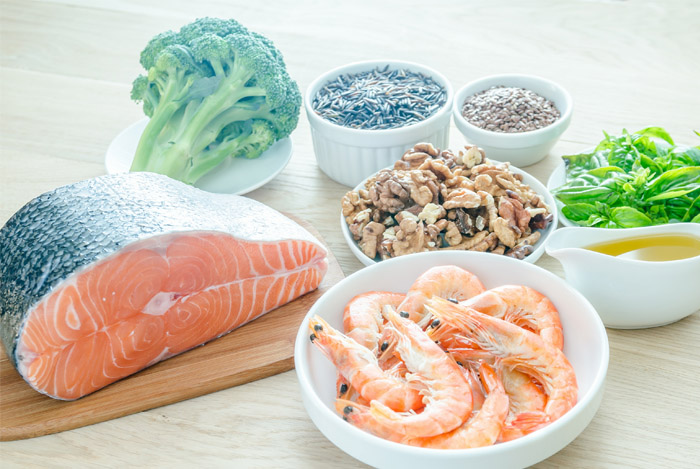 Back in the day, we were still learning about the role fat plays in heart disease. Fat was the enemy and was brusquely eliminated from all of our favorite foods.
Back in the day, we were still learning about the role fat plays in heart disease. Fat was the enemy and was brusquely eliminated from all of our favorite foods.
“But there were a lot of complexities that scientists didn’t yet understand, and not a lot of data”.
In hindsight we know this was a huge blunder because when fat was replaced with carbs and sugar, Americans started getting fatter and unhealthier.
Removing the fat from food products forced manufacturers to add other unhealthy ingredients back in to make their products taste like what we were used to. Hello, aspartame, sucralose, and all their killer friends.
Since fat free and light products have been flying off the shelves, food companies have no real reason to stop making them.
Food products can be labeled as ‘light’ if they contain 50% less fat than what’s found in comparable products. But that doesn’t say anything about sugar.
Be warned: some fat free or light versions of your favorite foods may contain as many or more calories or sugar as the full fat versions!
Fat is not the enemy; healthy fats provide:
- essential fatty acids
- help for fat-soluble vitamin absorption
- soft and shiny skin and hair
- protection for our hearts
- energizing fuel
You might be surprised to learn how many healthy fatty foods there actually are.
7. Low Cholesterol Terms
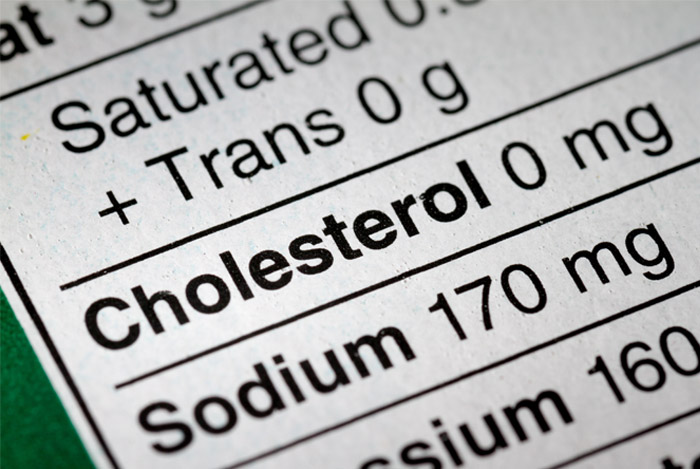 You’ll find cholesterol in animal products such as dairy, eggs, butter, and meat, but not in plant products.
You’ll find cholesterol in animal products such as dairy, eggs, butter, and meat, but not in plant products.
The USDA says we should consume less than 300 mg of cholesterol on a daily basis.
To help you manage that amount, you’ll see these three cholesterol labels:
- Cholesterol free: means the product contains less than 2 mg of cholesterol per serving.
- Low cholesterol: means the product has less than 20 mg per serving.
- Reduced or less cholesterol: means the product is at least 25% lower in cholesterol than comparable products.
Keep in mind that reduced or less cholesterol doesn’t really mean anything unless you know the exact products being compared. If one product has 600 mg of cholesterol, a reduced cholesterol product will still have 450 mg, still an unhealthy number.
8. 2% Fat Dairy Milk
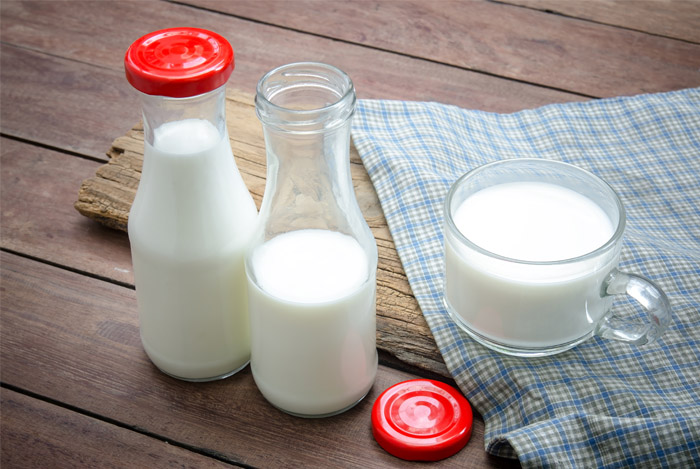 If you still can’t get on the non-dairy milk bandwagon, 2% milk may seem like a healthy compromise. After all, it’s just a single percentage higher than 1% milk and just 2% fattier than the cloudy water they call skim milk.
If you still can’t get on the non-dairy milk bandwagon, 2% milk may seem like a healthy compromise. After all, it’s just a single percentage higher than 1% milk and just 2% fattier than the cloudy water they call skim milk.
But here’s a secret most people don’t know: whole milk is only 3.25% fat.
“The reason it’s called “whole milk” has less to do with its fat content, than the fact that it’s comparatively unadulterated”.
Both 2%, 1%, and skim milk need to go through additional processes to remove dairy fat. But this process doesn’t make 2% that much healthier than whole milk.
Let’s compare one cup of each:
- Whole milk: 146 calories; 7.9 g fat; 7.9 g protein; 12.8 g carbs; 12.8 g sugar
- 2% milk: 122 calories; 4.8 g fat; 8 g of protein; 12.3 g carbs; 12.3 g sugar
Now when you think about it, is 2% really that big of a switch?
2% milk gives you about the same amount of protein for around 60% of the fat. So if you need to watch your fat levels specifically, stick to low fat dairy by choosing 1% or skim milk (which has less than 0.5% fat).
But if you’re eating a moderately healthy diet, you shouldn’t fear having a small serving of whole milk dairy or cheese instead of a 2% option.
Remember that fat triggers your satiety response so you’ll actually feel fuller quicker after eating a smaller piece of whole milk cheese than you would eating many pieces of reduced fat cheese.
You don’t want to miss out on all the health benefits of cheese.
According to a recent review: “People who eat full-fat dairy are no more likely to develop cardiovascular disease and type 2 diabetes than people who stick to low-fat dairy”.
9. No Sugar Added
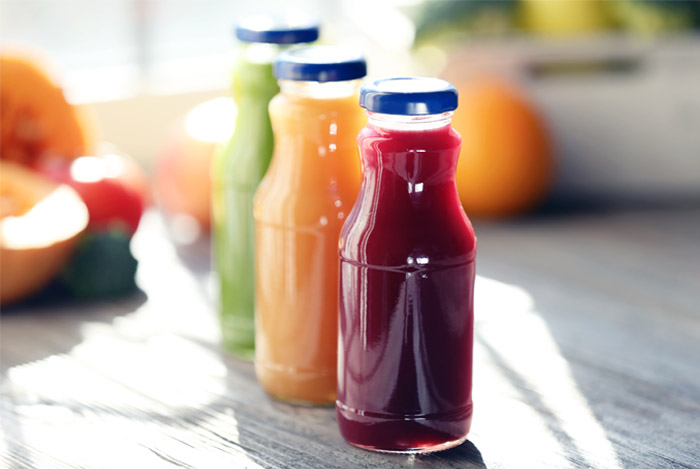 You’re trying to curb your sugar intake so when you come across a delicious product that claims it’s without sugar, you think you’ve found the winning cocktail.
You’re trying to curb your sugar intake so when you come across a delicious product that claims it’s without sugar, you think you’ve found the winning cocktail.
Fruits, fruit juice, milk, and certain veggies are perfect examples of natural sugars found in foods. They don’t need any more sugar because nature made them sweet enough.
But that doesn’t mean you’re not still getting a dose of sugar when you eat them. When your fruit juice has more sugar than a can of soda and the same lack of nutrients, your body processes them both the same way.
‘No sugar added’ products can be made per the FDA with “artificial sugars and sugar alcohols, which have fewer calories than regular sugar”. These don’t even need to be on the nutrition label.
Other foods may use ingredients such as maltodextrin, a simple carbohydrate, that will still raise your blood sugar levels.
So when you see a product labeled as ‘no sugar added’, check to see what else is inside. Make sure you understand that natural sugar is still sugar that needs to be accounted for.
Which leads me to my next trick…
10. Sugar Free
 By definition, sugar-free products have to contain less than 0.5 grams of sugar per serving.
By definition, sugar-free products have to contain less than 0.5 grams of sugar per serving.
However, that doesn’t take calories and carbs from other sources into account. There could be an overwhelming amount of simple carbs in that food, sometimes way more than the original, full sugar version.
Plus, to sneak under the 0.5 g limit, food companies use artificial sweeteners such as aspartame, the secret killer hiding in our food, and sugar alcohols. Sugar alcohols such as mannitol, sorbitol, or xylitol are lower in calories, but they’re no walk in the park.
Sugar alcohols can give you very unpleasant side effects such as:
- bloating
- gas
- cramping
- diarrhea
Be extremely careful about foods labeled as ‘lightly sweetened’.
Unlike terms such as ‘no sugar added’, ‘sugar free’, and ‘reduced sugar,’ ‘lightly sweetened’ is not a term evaluated or defined by the FDA so it has zero guidelines other than what marketing agencies are trying to sell you.
11. High Fiber
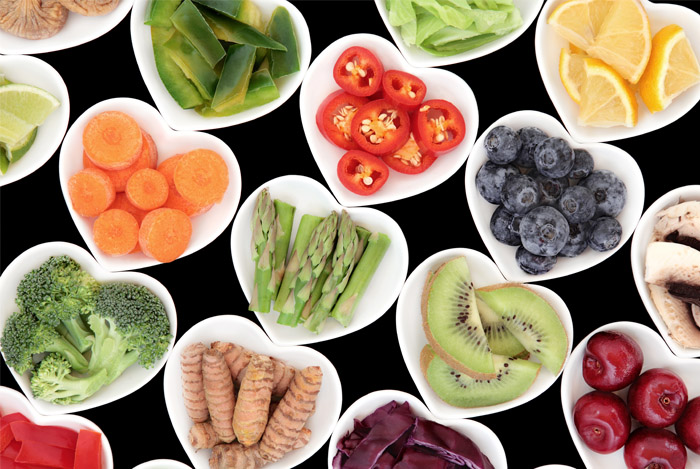 We should be aiming for 25–38g of fiber per day according to our age and gender, but the average adult only gets 15 g of fiber every day.
We should be aiming for 25–38g of fiber per day according to our age and gender, but the average adult only gets 15 g of fiber every day.
So it’s no surprise that Technomic, a food-industry consulting firm, says that 66% of consumers look for the phrase “high fiber” when they’re food shopping.
Eager to cash in on this trend, food companies have been stuffing isolated fibers and purified powders into their food to raise the fiber content and entice buyers.
However, this faux high fiber is not the same as the high fiber in fruits, veggies, and whole grains and has not been proven to have nearly the same health benefits.
Look for and avoid ingredients such as:
- maltodextrin
- oat fiber
- wheat fiber
- hull fiber
- inulin
- polydextrose
FYI: “Inulin is not digested or absorbed in the stomach” so it may cause some GI discomfort.
Now that you know some of these sneaky tricks, you’re probably wondering how you’re ever going to trust a nutrition label again.
And I totally hear you.
Take the nutritional facts as a guideline with ample room for a 20% margin of error.
The only way to avoid processed ingredients in your food is to read the ingredient labels like you’re preparing for a test. Make sure you understand what every single ingredient means and does to your body.
If you recognize the ingredients as wholesome, or what you’d use in your own kitchen, it’s probably a safe decision. But always be critical with ingredients that sound like they were created in a lab, because they most likely were.
Which of these tricks surprised you the most? Share your thoughts (and possible outrage) with me in the comments!
The post Eat Smart: Avoid these 11 Common Food Labeling Tricks appeared first on Nutrition Secrets.
http://www.nutritionsecrets.com/eat-smart-avoid-these-11-common-food-labeling-tricks/
No comments:
Post a Comment